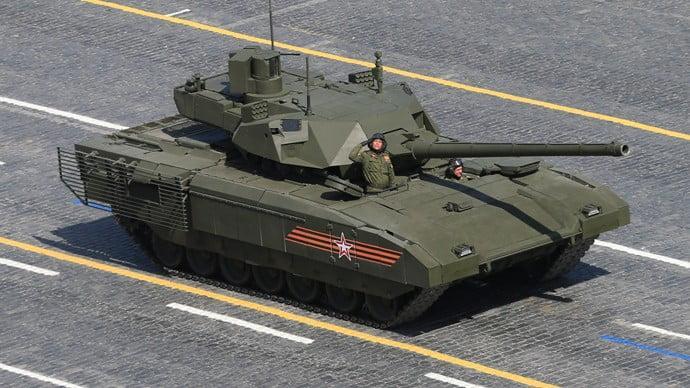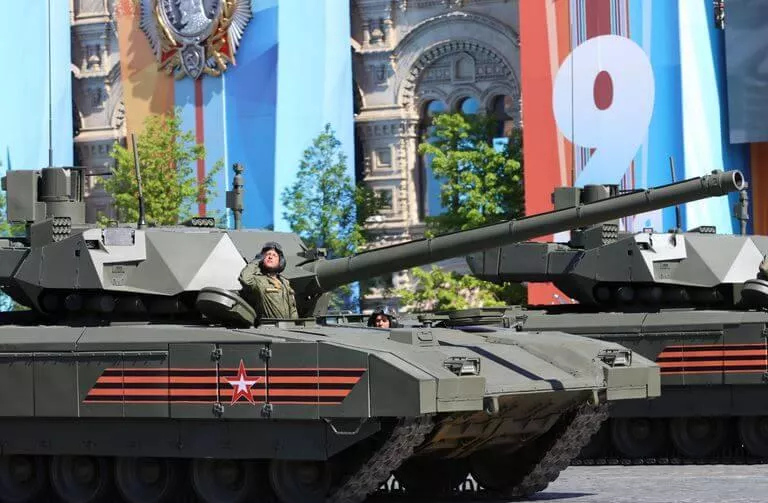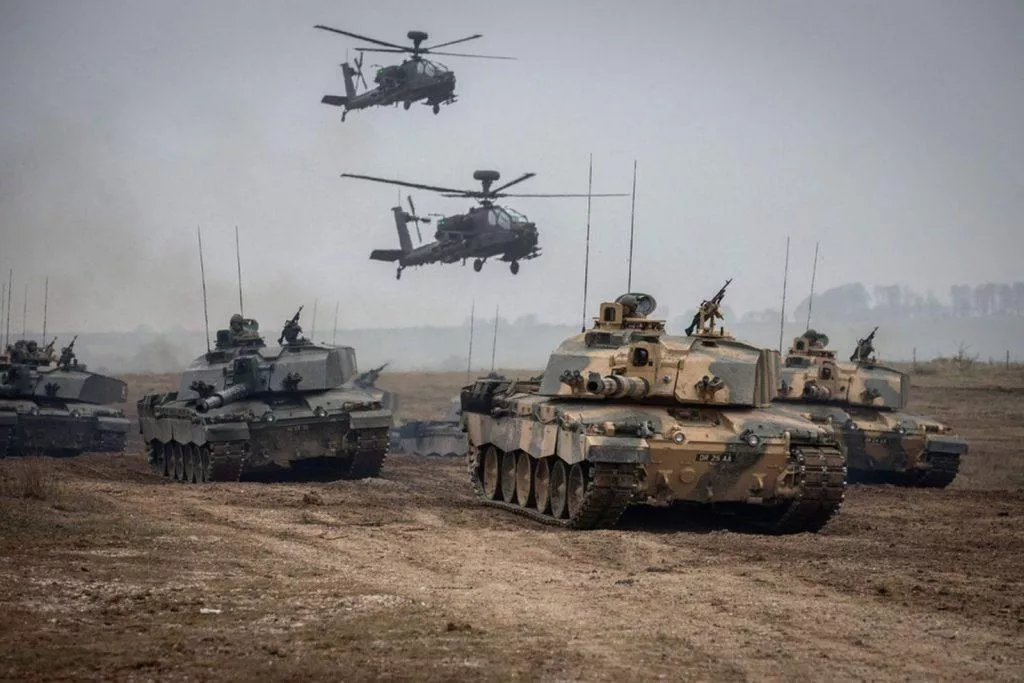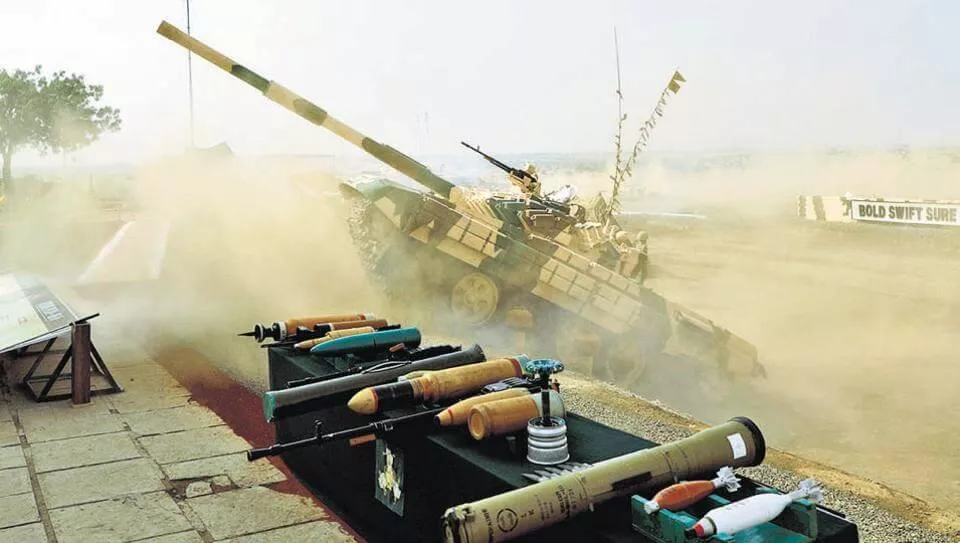El Programa de blindados ARMATA, es una plataforma modular que sirve como base para configurar diferentes sistemas blindados, tales como el Tanque de Batalla (T-14), el VCI (T-15) y VCA 152mm, entre otros. Con tecnología de última generación, los T-14 y T-15 se presentaron en 2015 durante el desfile del Día de la Victoria en Moscú. Sin embargo, cinco años después de su presentación oficial, aún no hay T-14 Armata en servicio operacional y muchas de sus características principales son aún desconocidas. Armata es el reemplazo natural de las plataformas T- 72, T-80 y T-90 en servicio en muchos países y que presentan vulnerabilidades para hacer frente a las exigencias del combate moderno, tal como se ha observado en conflictos recientes. En éste artículo, el autor presenta los aspectos más destacados que se conocen con certeza del moderno tanque.
T-14 ARMATA is a Russian state-of-art tank that made an impressive debut during the Victory parade 2015 in Moscow. But, almost five years after, it is still shrouded in mystery and has proved a magnet for various rumors. We have assembled a list of ten facts that we know for sure.
Despite these ten facts, it is still hard to talk about its performances and place in the world of tanks. We must wait a few more years for detailed reports and their use on the battlefield. So far, the analysis claims it is a new generation of world tanks, but some others are skeptical.
Armored platform, not tank itself
Armata stands for an armored program (platform), and it is not the name of a tank itself. The Armata platform is intended for modules to be fitted to create more than a dozen vehicles. Besides the T-14 battle tank, Armata will be the chassis for an armored personnel carrier (APC), self-propelled artillery, and an air defense weapon system.

First Tank in the post-Soviet era
Armata T-14 MBT (main battle tank) is the first tank designed entirely in the post-Soviet era. As it is known so far, the Armata program started in 2009. It is revealed that the design and production of certain crucial elements – such as the armor and the turrets – had to be done “from scratch.” That means it’s not a copy of another Russian design.
Innovative design and the unmanned turret
Armata T-14 MBT features an innovative design in the world of tanks. It has a fully automated and unmanned turret. Perhaps that means the most innovative technological decision its creators make, but it is still unclear how it will work. In theory, this should allow better protection for the tank crew, now located in the hull, though the shift could come at the expense of situational awareness. We can’t wait to see it on the field, in real action.
The first unmanned battle tank in history
In fact, due to its new-gen revolutionary turret and a field of vision created only by numerous HD cameras and sensors, Armata T-14 is well on the way to becoming the first unmanned battle tank in history. Some reports on the Russian Defense Ministry revealed that only limited modifications are necessary to turn it into a ground drone.
The most powerful tank in history
In the future, it is planned to fit the T-14 Armata tank with the long-awaited massive 152 mm gun modification, which will be able to “penetrate through a meter of steel,” according to Russia’s top defense official. If this one is true, it will be the most powerful tank gun.

Afganit Active Protection System (AAPS)
T-14 Armata MBT is equipped with Afganit Active Protection System (AAPS). The ambitious AAPS uses radar to detect incoming projectiles and automatically intercept them. Like with many things, AAPS’s exact parameters are unclear; Russians claim it could stop missiles launched from an Apache helicopter. US Army experts say the defense will mostly be effective against grenades and sub-caliber projectiles.
Lighter and faster than most modern MBTs
Lighter than most modern Western main battle tanks, the Armata T-14 maintains one of the trademark qualities of Russian armored vehicles – a higher top speed. The new Russian state-of-art tank can move up to 90 km/h, more than 20 km/h faster than the US Abrams M1A2 main battle tank.

Not cheap, not expensive
If we look at the Armata price, even though it is not yet in mass production, the T-14 Armata’s cost was estimated at $8 million at current exchange rates per unit. It launches the T-14 Armata in the upper price range for main battle tanks, but still, it remains cheaper than the French AMX Leclerc and US M1A2 Abrams tank and below the price of other same-level vehicles, such as South Korea’s K2 Black Panther and Japan’s Type 10 tanks.
500 units per year
According to public military sources, the Russians are currently operating with more than 50 prototype models of the T-14 Armata tank. They are planning to receive more than 500 a year soon, with the eventual order expected to top out at 2,300 units – more than two-thirds of its armor capability.
Foreign clients
India is marked as the possible first foreign client for the Armata platform and main battle tank T-14 Armata which will supersede the T-90. India operates over 900 T-90s already purchased from Russia (India is the biggest buyer of Russian armor, among other weapons). China, the rest of Asia, and North Africa are other possible destinations for Armata T-14.

Fuente: https://special-ops.org

